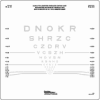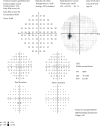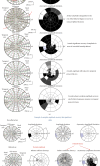The Afferent Visual Pathway: Designing a Structural-Functional Paradigm of Multiple Sclerosis
- PMID: 24288622
- PMCID: PMC3830872
- DOI: 10.1155/2013/134858
The Afferent Visual Pathway: Designing a Structural-Functional Paradigm of Multiple Sclerosis
Abstract
Multiple sclerosis (MS) is a disease of the central nervous system (CNS) believed to arise from a dysfunctional immune-mediated response in a genetically susceptible host. The actual cause of MS is not known, and there is ongoing debate about whether this CNS disorder is predominantly an inflammatory versus a degenerative condition. The afferent visual pathway (AVP) is frequently involved in MS, such that one in every five individuals affected presents with acute optic neuritis (ON). As a functionally eloquent system, the AVP is amenable to interrogation with highly reliable and reproducible tests that can be used to define a structural-functional paradigm of CNS injury. The AVP has numerous unique advantages as a clinical model of MS. In this review, the parameters and merits of the AVP model are highlighted. Moreover, the roles the AVP model may play in elucidating mechanisms of brain injury and repair in MS are described.
Copyright © 2013 Fiona Costello.
Figures








References
-
- Poser C. M., Paty D. W., Scheinberg L. New diagnostic criteria for multiple sclerosis: guidelines for research protocols. Annals of Neurology . 1983;13(3):227–231. - PubMed
-
- Lublin F. D., Reingold S. C. Defining the clinical course of multiple sclerosis: results of an international survey. Neurology . 1996;46(4):907–911. - PubMed
Publication types
LinkOut - more resources
Full Text Sources
Other Literature Sources
Research Materials
Miscellaneous

